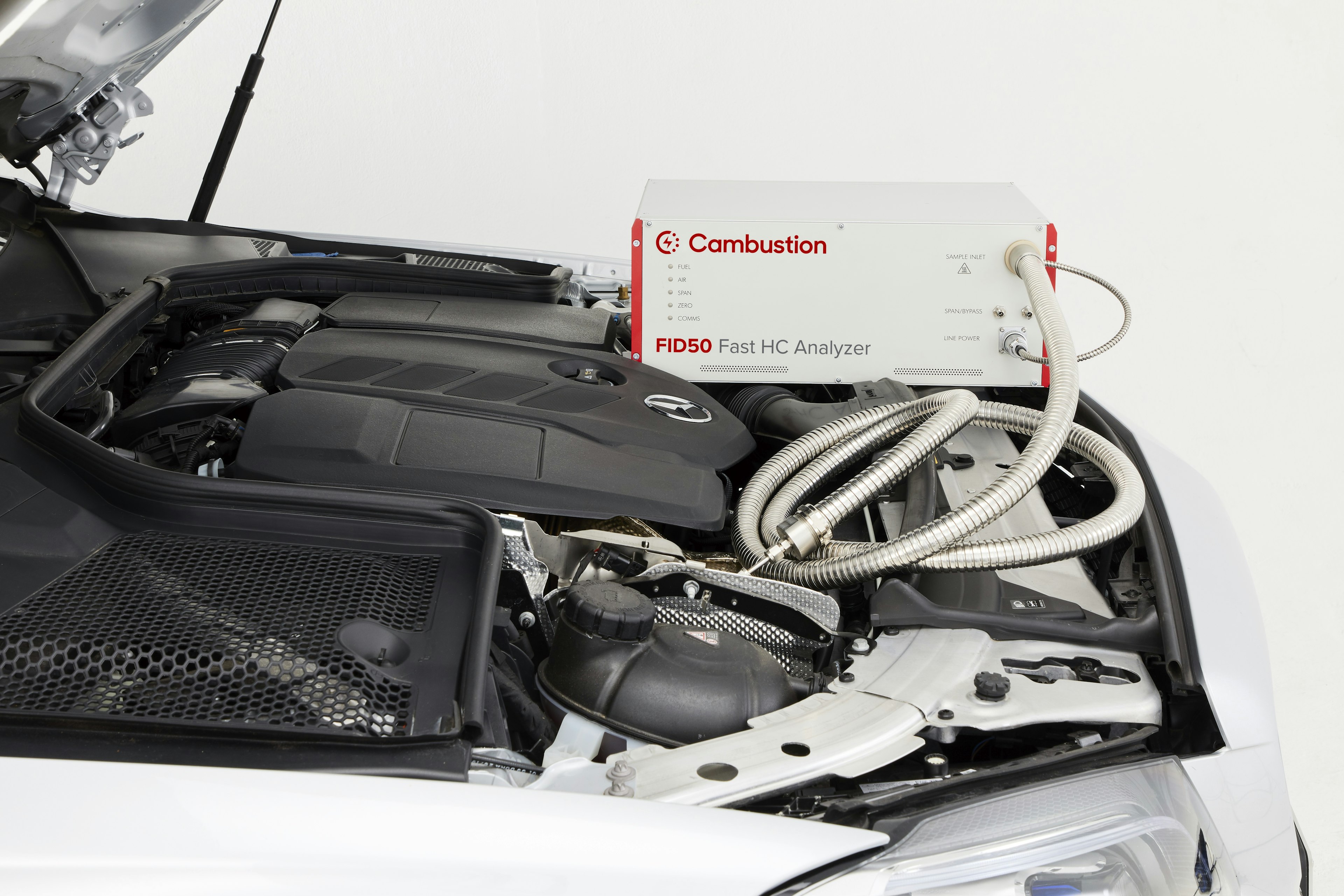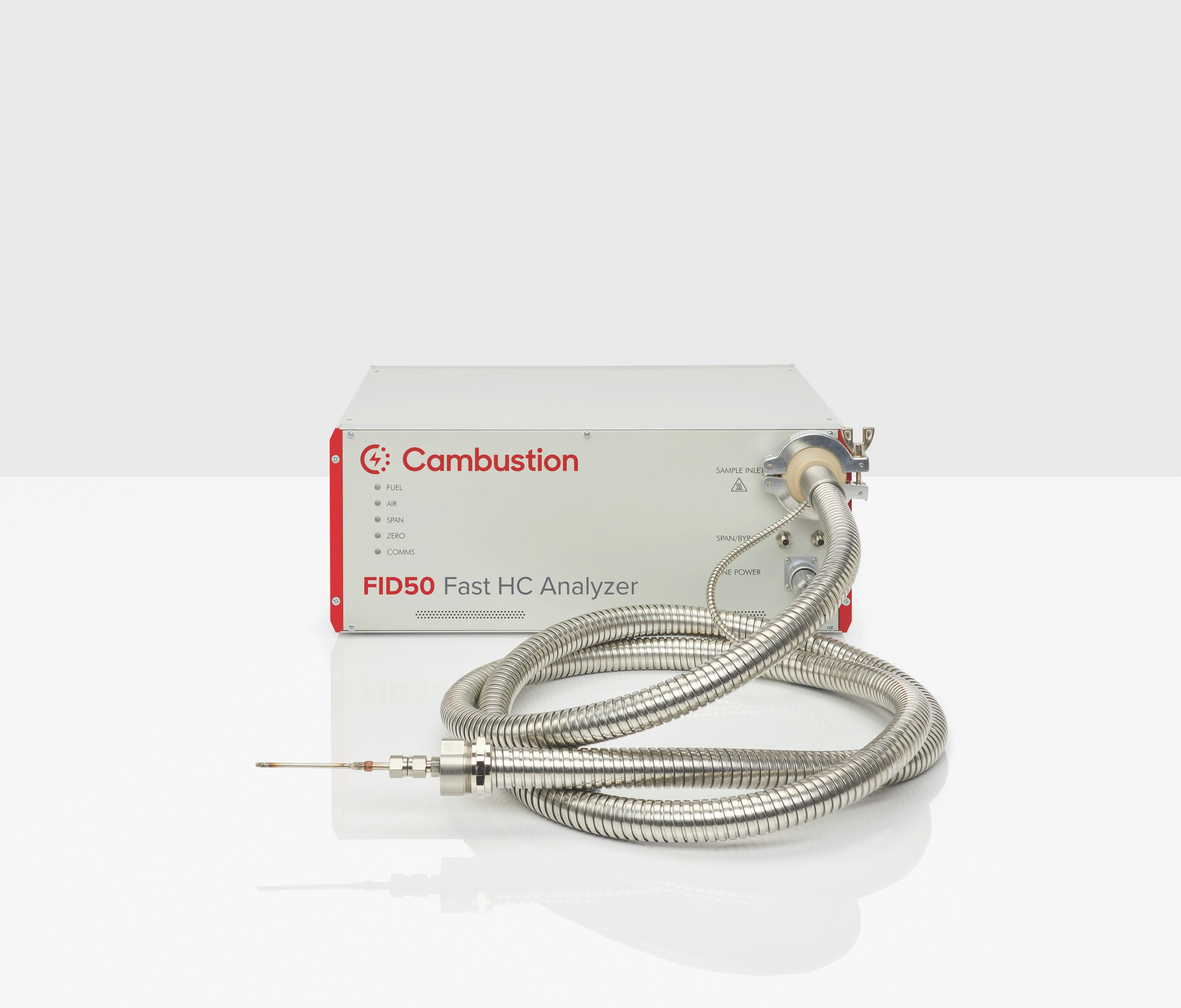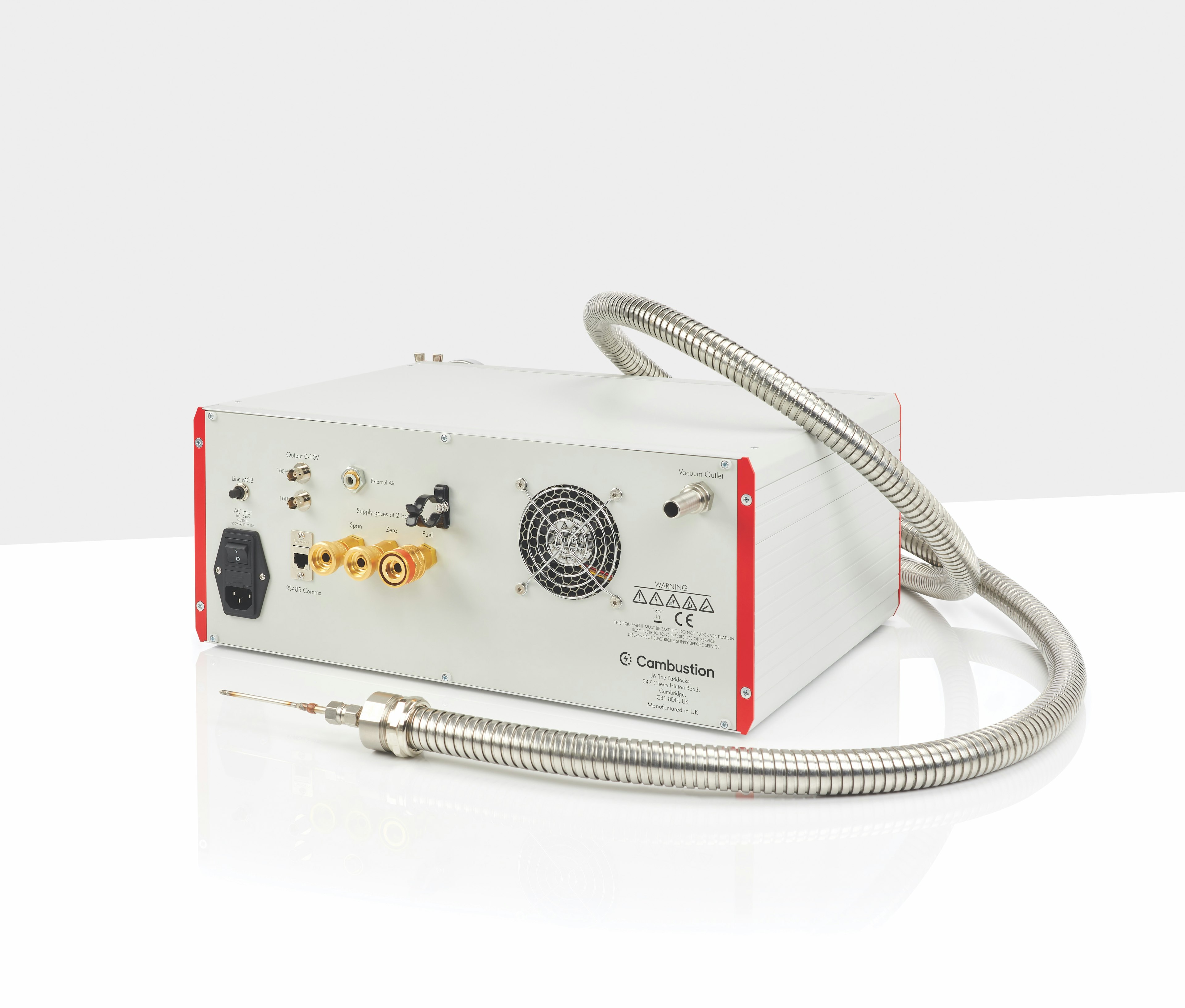FID50 | Flame Ionisation Detector
The FID50 fast FID is designed for both engine and non-engine single channel applications where a 15 ms T10-90 response time is sufficient.
Typical applications include pre- or post-catalyst engine exhaust THC measurement, rapid leak detection from HC gas-carrying pipelines, mobile THC measurement, wind tunnel measurement of HC tracer gas mixing & dispersion, feedback control of biogas production and other process control applications.
Differences from other Cambustion HC Analysers
The design differs from the other Cambustion fast gas analysers in two significant ways:
It is a single channel analyser.
Its detector is housed within a small control box with a heated or unheated sample line delivering the gas from the sample point.
Typically, the sample line length is 3 metres and with the option of sample filtration where contaminated sample may deposit within the control box.
Like our other fast FIDs, the detection method is still using the trusted FID principle.
Typical applications include pre- or post-catalyst engine exhaust THC measurement, rapid leak detection from HC gas-carrying pipelines, mobile THC measurement, wind tunnel measurement of HC tracer gas mixing & dispersion, feedback control of biogas production and other process control applications.
FID50 Brochure
For more information download a brochure. Please contact Cambustion for more information and prices.
Example Data
Comparison of FID50 vs Conventional Analyser Cold Start Engine Data
Engine-out THC from modern GDI gasoline engine - WLTP drive-cycle
Wind Tunnel Example Data
Schematic and sample data from Cambustion FID used for wind tunnel applications
Ultra-fast HC contamination detection in industrial processes
Ultra-fast HC measurement to identify fuel & oil contamination of containers is now possible with millisecond response. Cambustion’s FID50 has been adapted from a 30 year heritage of engine exhaust measurements and wind tunnel tracer gas applications to adapt it for process measurements where the high speed of passing product requires ultra-fast response to identify any “spikes” in hydrocarbon readings – indicating contamination.
With a 10-90% rise time of 10 milliseconds, this fast FID is ideal for process control and identification of hydrocarbon traces.
The system includes a heated or unheated sample line (typically 3 metres long but with alternative lengths available) whose sensing tip can be held either at a fixed location to sample from a passing production line or moved rapidly from point to point using a robot arm, needing to dwell at each position for only 10 milliseconds to identify a trace of HC contamination.
The rapid time response means that process speed need not be limited by the detection time lag inherent in traditional hand-held and fixed format flame ionisation detectors (FIDs).
The equipment is 19” rack mountable or free-standing with an option to fuel for up to two hours using small 3-inch hydrogen “sticks” for portable applications.
Common practice in the oil and gas industry is to burn unwanted or contaminated methane in a gas flare. The burning efficiency of this flare is key to minimising the amount of methane which escapes in to the atmosphere; methane being a more significant greenhouse gas than CO₂ (80 times as much). For modelling purposes, the conversion efficiency is assumed to be >>90% but there is speculation that in variable wind or gas composition conditions, the burn may be much less efficient with very significant (but short duration) releases of methane whose full extent will not be measurable with conventional gas analysers. The video shows a fast response FID measuring the transient methane escape from a flare scale model (a Bunsen burner in open air) with ambient wind conditions disturbing the flame and producing very short duration bursts of CH₄ release.
Key Application Notes
| Title | Data Type | Download File | Size | Last Updated | |||||
|---|---|---|---|---|---|---|---|---|---|
| Title | Combustion instability detection during catalyst heating phase of GDI cold start | Data Type | Application note | Download File | hfr09v01-gdi-cold-start-catalyst-heating-strategy-combustion-instability.pdf | Size | 556.60 KB | Last Updated | |
| Title | Flame Traverse Sampling | Data Type | Application note | Download File | cld06v01-fast-gas-analysis-traversing-a-methane-flame.pdf | Size | 1.69 MB | Last Updated | |
| Title | Gasoline Direct Injection (GDI) HC emissions | Data Type | Application note | Download File | hfr07v01-gdi-hc-emissions.pdf | Size | 131.46 KB | Last Updated |
Need more information? Connect to an expert
Support & downloads
LabVIEW Run-Time Engine 2011
https://www.ni.com
Brainboxes Serial Drivers
http://brainboxes.com
Easysync USB Serial Drivers
https://ftdichip.com
Fast FID Principles
The flame ionisation detector (FID) is the automotive emissions industry standard method of measuring hydrocarbon (HC) concentration.
FID50 Introduction
A lower cost and simplified version of Cambustion's long-established fast FID. Jamie Parnell takes you through the latest offering from Cambustion.


